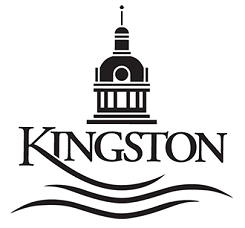- cross-posted to:
- canada@lemmy.ca
- cross-posted to:
- canada@lemmy.ca
Section relevant to Kingston:
DONNA FORSTER and her husband, Joe Fardella, experienced the retrenchment of local journalism first hand on Thursday, July 18, 2024, when they settled in to watch the 6 p.m. local news in Kingston, Ontario. They expected to see Bill Hutchins, the affable news anchor on CKWS Global News Kingston, deliver the better part of an hour of local news and interviews from the station’s downtown broadcast centre, just as he’d done for twenty-seven years. Instead, their TV screen was blank.
“We just had no idea what had happened,” Forster says. The next day, they learned that the Kingston station had fallen victim to spending cuts by its troubled parent company, Corus Entertainment. When the revamped supper hour newscast appeared four days later, it was unrecognizable. About two dozen on-air personalities, reporters, and support staff at CKWS and the two local Corus-owned radio stations lost their jobs. Hutchins, then president of the broadcast centre’s Unifor local, says that as recently as 2023, the station had seven full- and part-time videographers covering Kingston and its environs. Following the July purge, there were three. What was a locally produced sixty-minute show that included local weather, sports, entertainment, and news about everything from city politics to community food drives now starts at 5:30 p.m. and lasts a half hour. The truncated newscast, anchored out of Peterborough, is recorded and shown again at 6:30 p.m. Producers in Toronto determine the story lineup.
“There’s far, far less information about Kingston now—they usually have one Kingston story, one Brockville story, and one Belleville story,” says Forster, a sixty-two-year-old social worker. By her reckoning, news about Kingston and the surrounding area now lasts about four minutes. As someone who eschews social media, Forster increasingly thinks of that blank television screen she saw back in July as a metaphor for feeling less connected and aware of what’s going on in her community.
She is not alone. “There’s not a day goes by that I don’t run into someone who wants to know what happened, why it happened,” Hutchins says. “When you take a seventy-year-old station with deep community roots, and I mean deep, and you just rip them out of the ground one day, people feel hurt, they feel abandoned, they feel lost.” CKWS, he says, specialized in “a little bit of everything that reflected the community,” and people tell him they are struggling to make sense of the remaining local news offerings.
Christine Sypnowich, a Queen’s University philosophy professor and chair of the Coalition of Kingston Communities, says the loss of a strong local television newscast creates “a really bad situation.” The coalition, which brings together nineteen neighbourhood groups, counted on CKWS to cover local issues that it then pursued further in its report cards on openness and transparency at city hall. The station also helped the coalition share its concerns with the public: a CKWS reporter typically sought an interview within hours of receiving a coalition press release. Nowadays, Sypnowich says, attracting media attention is more “hit and miss.”
The CKWS cuts are the latest symptom of decline in Kingston’s once-rich local media environment. The storied Kingston Whig Standard newspaper, winner of two prestigious Michener Awards for public service journalism and a host of other honours, is “less and less relevant,” Sypnowich says. The Postmedia Network–owned newspaper publishes daily only four times a week and is so diminished it sometimes runs Sypnowich’s press releases verbatim. There are just five unionized staff left in its newsroom, down from sixty-nine in 1992.
Kingstonist.com, a digital news outlet, is working hard to fill the gaps, Sypnowich says. But it is a relatively small operation, with just three full-time journalists, a manager who occasionally helps out with news coverage, and a budget for freelancers. Forster and Fardella recently stepped up to support the publication, but their willingness to pay for digital news makes them a rarity. While almost three quarters of Canadians (72 percent) access news online, a majority still believe journalism is best served up free, with 57 percent indicating they won’t pay anything at all for it. Nationwide, only 15 percent of us opened our wallets to support digital news, according to data published in 2024. Just over half of those subscriptions (54 percent) were discounted.
IMO the Kingstonist is awesome! Definitely worth supporting them with a subscription if you have the means. If not, visit them anyway and stay informed.


